What will Southwest’s next big Hawaii move be as Alaska is moves towards finalizing its acquisition of Hawaiian Airlines.
“It will be interesting to see how Southwest responds to this merger. It wouldn’t surprise me in the least if SWA cuts back both Trans-Pac and Interisland capacity as a result of this merger. All in all, I’m happy that the merger will take place. Both AS and HA are good for the people of Hawaii and our visitor industry.”
Comment from BOH reader, Channing.
Southwest Airlines, the disruptor in the U.S. airline industry, including Hawaii, originally brought lower fares and customer-friendly policies to the islands. When Southwest arrived five years ago, it was met with high expectations. However, the Hawaii market, including interisland travel, has presented unique challenges that continue to drive ongoing Southwest strategy changes. As the airline navigates these complexities, recent developments suggest that Southwest might be the next big change coming to Hawaii travel.
Could Southwest again reduce Hawaii flights significantly?
As we prepare to settle into the apparent reality of a new and very different Alaska Airlines/Hawaiian Airlines tie-up, it will be Southwest that takes the brunt of the impact from that deal. Competing with Hawaiian Airlines was one thing. And even then, Southwest has been challenged beyond expectations in Hawaii, despite being an airline behemoth.
But now, combining the loyalty and culture of 95-year old Hawaiian Airlines with the savvy, technology-driven and not to be stopped Alaska Airlines, is going to present an entirely different competitive playground for Southwest. Last week United CEO Scott Kirby heaped praise on Alaska (and Delta), as well as his own company. His comment helped elevate Alaska into the top tier airlines.
The likelihood of significant further cutbacks in Southwest Hawaii flights is being widely discussed among those who follow the Hawaii travel industry. How that will shake out should be known in the coming months.
Southwest’s Entry into Hawaii has been challenging.
Southwest Hawaii flights were anticipated to shake up the market, and we wrote about them for ten full years before they began. They offered competition to bellwether Hawaiian Airlines, which was long dominant in west coast and interisland Hawaii travel. However, a myriad of issues starting with Covid, led to changes in Hawaii travel demand and severely complicated the airline’s efforts.
Nonetheless, Southwest remained committed to the Hawaiian market, first expanding its flights. However, the challenges in Hawaii subsequently forced Southwest to make strategic decisions including a cut-back of 50% of Hawaii flights, and there could be further changes ahead.
Read: Southwest Airlines Trims Hawaii Routes By Over 50%.
Strategic adjustments in the Hawaii market.
In response to the challenges of the Hawaii market, Southwest has implemented several key strategies aimed at sustaining its operations and preparing for future growth:
Build a loyal Hawaii customer base. Southwest seeks to thwart Hawaiian Airlines’ loyalty. This process has been painfully slow and costly, however.
Finding the right plane for the job. In Hawaii, that has been challenging with larger than desired planes for interisland, resulting in both less full and less profitable flights.
Southwest Hawaii redeye flights. To better utilize planes, and serve passengers from further afield than the west coast, Southwest will introduce Hawaii redeye flights.
Challenges and competion are unending for Southwest Hawaii.
Despite their best efforts, Southwest continues to face significant challenges in Hawaii, exacerbated exponentially this week by the DOJ in effect approving of the Hawaiian/Alaska deal. While Southwest is far larger than Alaska, the reality is that Alaska is not someone you want to tangle with.
Southwest’s recent troubles suggest that changes are coming, which could also lead to higher costs for Hawaii travelers. The airline has indicated that it may seek to increase fares as it manages rising costs.
Read: The Southwest Effect In Hawaii: Is It Officially Over?
The impact on travelers: A mixed bag.
For Hawaii travelers, Southwest’s presence has generally been a positive development, offering added options and lower fares in competitive markets.
Looking ahead: Southwest’s commitment to Hawaii and the long road ahead.
Southwest’s massive investment in the Hawaii market demonstrated its commitment to becoming a major player in the region. However, the airline continues to face significant headwinds.
As the industry quickly evolves given these changes in the context of Hawaii’s unique and quirky air market, Southwest’s strategies will need much more adjustment. The airline’s ability to adapt to these challenges will determine its future success in Hawaii. In the short-term, travelers can still enjoy the benefits of increased competition, while anticipating potential changes on the horizon.
Southwest Airlines’ experience in Hawaii reflects the complexities of operating in our unique and highly competitive market. While the airline has made significant inroads, it faces unforeseen challenges that require more adjustments. As the next major shifts in Hawaii travel unfold, Southwest’s role will indeed be one we watch closely.
We welcome your comments!
Get Breaking Hawaii Travel News
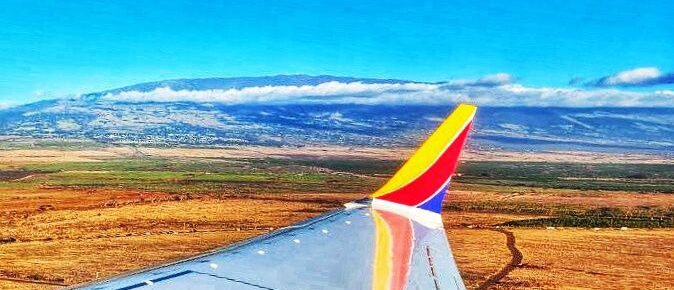
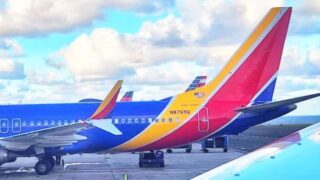
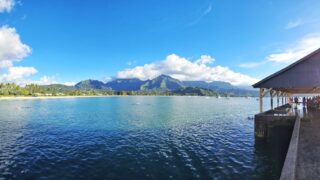
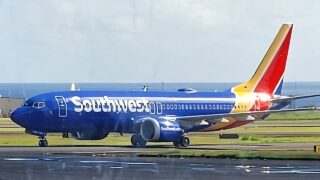
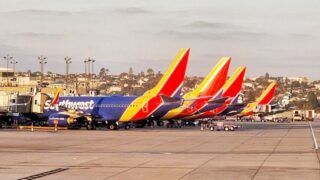
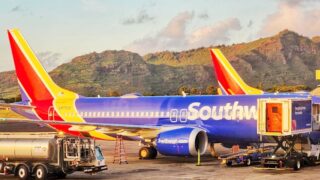
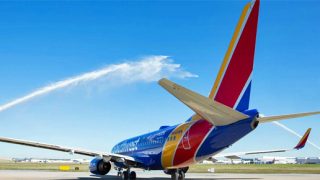
We live a few months at a time in Maui and then return to the mainland for a fews months, all year long. We are older and hate red eye flights as we don’t sleep at all sitting upright, like so many people seem to be able to do.
Therefore, we prefer Southwest and their daytime flights too and from the mainland!!
Southwest gate dominance on the West Coast could prove valuable for all traveling from there. Arizona and Utah have a large Hawaiian travel population. Suppose they upgrade interiors, seating, and food. Remember the West Coast was the Hot spot for Hawaiian travel, when they started bringing all those other states visitors, things went to shit for everyone.
One thing that has been challenging for Southwest is its gate position at HNL. Keep in mind this – the interisland market is one that is like a bus operation – get in, get out for passengers in a quick way. Right now with SWA at the Central Concourse, they are at a disadvantage due to the way that terminal is. The interisland one works for that market better than the main transpacific terminal. Other airlines figured this out before starting operations and made sure that they got space at the HNL interisland terminal. SWA has not been able to make that move and I think that is a hindrance to any future growth for them.
According to airline industry news, that was a deliberate decision by
SWA due to the high value of main terminal gate space .
Even though it makes them lose more money on inter island flights, keeping the inter island flights in the main terminal protects the gate space which gives SWA more flexibility to schedule fights to and from the mainland.
I read the same article, and on the surface with no other factor at play, that makes sense. However, with the new Mauka extension of the Interisland Terminal and that taken over by Hawaiian in whole cloth, I am sure that there is the ability to reassign the old “Aloha wing” of the Interisland terminal to Southwest. After all, Aloha was able to use those gates for both interisland and transpac service using planes that are about the same as the one’s Southwest uses now.
I’m hoping SWA stays viable for the Hawaiian mainland and inter island markets. IMO, it was terrible before when HA would routinely try to graft people for a $200 change fee on a $100 flight. Not to mention the high baggage fees. I guess they finally got rid of change fees (only because of Covid?) but I suspect they will return if SWA departs serving Hawaii. You know they want to squeeze every dime out of you they can if possible. We need the flight competition – loyalty be damned. After getting grafted by them for years I vowed never to use HA again and hopefully I won’t have to. And Who cares about in flight meals anyway? Even the best plane food isn’t very good. Just bring your own if you want to eat on a 5 hr flight.
Here’s another nugget to chew on… Breeze Airways, with their brand new Airbus A220 aircraft, have started the process for ETOPS certification for possible over ocean flights to the Hawaiian Islands, as well as international destinations out of secondary feeder airports. Their Founder, David Neeleman, has prior start-up experience with JetBlue, WestJet and the long defunct, Hawaii Express. New planes, low fares, great service & an entrepreneural spirited CEO? Hmmmm, imagine the possibilities!
Hi Channing.
True that. https://beatofhawaii.com/breeze-airways-plans-hawaii-flights-what-we-know-now/.
Aloha.
I grew up in Houston, Texas and am old enough to have flown SW since year 1. And I’ve been blessed with a 10 year span living in Hawai’i plus having family and friends in the islands for over 3 decades, while living in the Americas, South and North. The last product I wanted to buy on a 5-6 hour US to Hawaii flight was in a SW cattle car seating experience with pretzels and beer. I think SW overestimated their appeal for every situation and market. Interisland, ok! Especially since there not fully loaded, lol. But no way am I doing that to the west coast with my family. It’s just Nuts😁 (An old SW marketing rif)!
SWA has more legroom than United, Delta and American have in economy. Take a tape measure next time.
Not a very high bar, and not only comparing that pool and category. But yeah, SWA is only one category. And good luck with the new acquaintance, leg spreading, long elbowed seat mate with the homemade tuna sandwich, for 6 hours. 🫣
PS use dakine website “seatguru” or the likes tell you dis…no need tape measure and the stink eye when you get it out 🤙
If you are talking from a first class seat perspective I get it.
If you are talking about an economy class seat perspective you have it all wrong.
I’ll take the Southwest cattle car over any other airline cattle car all day long. Objectively, Southwest is better at the economy class than all the rest. Update your flying experience and you will see.
Other cattle car assignments?
Only SWA does that, and they are dumping it for assigned seats with different service levels. That’s why activist investors are involved, SWA management has not innovated to the current market and Hawaii flights.
Unfortunately the unique Southwest boarding process created a loophole that allowed anyone to preboard before those who upgraded to priority boarding. All they have to do is declare that they have a handicap and they board first and most likely block seats for the rest of their party. I have flown Southwest and have witnessed this myself. This practice spawned the term Jetway Jesus. As soon as the plane lands they are healed.
Economy only! Isn’t that the problem, SWA wants to tell the market what it wants. But the market, for profitable airlines, wants multi service levels. SWA overestimated their appeal to the total available marketplace and is slow to adapt.
This article keeps saying Alaska is not to be messed with m However I would point out that Alaska fled many Hawaiian markets once Southeast entered the market. Once example is the Sacramento to Maui route. Alaska had this route after aloha Airlines shut down and most of the flights were full but one Southwest came along they abandoned this market. So far from Alaska competing they’re used to running away whenever Southwest comes into a given market.
I am distressed at the cuts in service and changes in seat prices. There are 2 drivers of Southwest’s problems; Stockholders who want more money without regard to the customer, and an inability to get new planes from Boeing. Both are outside management’s control.
Profitable airlines are the problem? How would you propose to “fix” this stockholder problem? Perhaps a dedicated state run airline. Along with”Da Bus” we get “Da Plane” too?
I was a diehard Alaska Airlines fan. I got their credit card with $99 companion fare and lived in the Eastbay of Northern California so Oakland Airport was close and convenient. I flew at least 4 times a year.
Covid changed everything. The only way to fly to Oahu on Alaska out of Oakland was to fly up to Seattle (SeaTac) and transfer planes.
I asked when would Alaska restart the non stop to Oahu. They said doubtful. I spent hours waiting on the phone to get flight info to change flights. I let my companion fare expire because of no direct flights out of Oakland.
Now you have to fly out of San Jose which is inconvenient. If you fly back from Oahu to San Jose in the afternoon the flight is always late meaning you get in at midnight and the deplane you at the furthest gate from baggage claim (20 minutes to walk to baggage claim.
I have been happy with Southwest. You know what you’re getting, 2 free bags, no extra charge for emergency row or flight change or cancelation.
Perhaps disgruntled with HI SWA airlines FA who complained bitterly about her situation a couple of weeks back will be reassigned away if routes are cut, and she can escape here and we can escape her entitled and unpleasant attitude.
🤙🫣😂Dat is funny!
As a passenger that regularly flies from Denver, I see considerable opportunity for expansion of nonstops to/from interior markets. The usual west coast connections make a long flight a lot longer. Hawaiian does not offer flights to Denver. Alaskan does but the connections are terrible. Southwest has many good connections, no baggage fees, no redeyes, good fares, and best economy legroom. Early speculation was Southwest would start nonstops from Denver but that hasn’t occurred. United is the only nonstop but requires a redeye return. Either Alaskan or Southwest has an opportunity to carve a big new opportunity and I hope that happens.
SWA cannot go out of Denver without the 700 MAX and that looks more and more to be a no go.
Southwest is the only non stop out of Oakland . As long as the price is similar, I will use whatever airline that flies non stop out of Oakland.
Pretty sure Hawaiian flies nonstop from Oakland. I flew nonstop oak to Hawaii 2 years ago. But that may have changed since Oakland became so sketchy
Hawaiian, United, Alaska, and Southwest all fly NS between HNLand Oakland.
According to airline industry news, SWA is losing a lot of money
on every inter island flight flying the 737 which has operating
costs which are way too high for short routes.
SWA’s top management is being pressed by their investors to
make significant changes to improve their profits.
We’ll see what happens:)
I agree with this article, for the most part. Both Kama’aina as well as Malihini mākaʻikaʻi want an authentic Hawaiian experience, as well as a local company that gives back to its people. Southwest was Never able to offer this type of product. Southwest came in, purely offering a lower price to thwart the current offering in the islands. Aloha Airlines was gone – and all that was left was a feeble fight with Hawaiian, who were already crippled by the current economy. Years ago (Google it) Southwest had (in their Crew Planning Room) an image of their 737 plane looking like the shark – going after Alaska (because they had just entered the HI market) and then feeding off of Hawaiian. It was quite the visual. They knew what they wanted to do. They dreamed Too Big . They did not factor in that Alaska and Hawaiian are so much closer in ancestry – or that both airlines Truly care about one another. As the locals say, “You come for my brudda, you have beef with me, too bra!”
Well said Michael…SWA will always be the airline that came over here with the intent to take what they could from the people that lived and worked here. Very similar dynamic to the original Missionaries. They cherry picked what routes would best serve them and exhibited very little perspective on what’s best for Hawaii. If people want free bags get the Hawaiian Air credit card!….the miles will be worth even more with Alaska, who will be the local airline here even though they are based in Seattle, just like they are the local airline in Alaska….assuming they keep Hawaiian, Hawaiian.
I have both Southwest and Hawaiian credit cards, but more often choose Southwest flights due to price and schedule–I imagine it has a lot to do with your home airport. I’m in Vegas–the 9th Island– and SW seems to recognize the Huge number of Vegas/Henderson residents who frequently travel back home for visits as well as the number of Hawaiians who fly to Vegas. I rarely find a better price/schedule on Hawaiian. The 2 checked bags, even without the credit card, is a bonus, as, believe it or not, people shop here and take goods home to the islands.
I took a couple of inter island flights this year on Hawaiian. Never again. They want to charge you for everything. It’s like flying Spirit Airlines. Your carry on bag can’t be over 15 lbs. I must have heard it 20 times waiting to board. They allowed an inebriated woman to board who could barely stand up. She was about to throw up several times and was bent over with her head between her legs tje whole flight dry heaving and wrenching. (Yes she sat next to me). You act as if SWA is a interloper. Airlines are a business, not a person. You want to pay more to keep Hawaiian afloat, it’s your money. I prefer to pay less.
No secret that Southwest has been struggling financially, and in the Hawaiian market. With Elliott pushing for big changes, I wouldn’t be surprised to see some moves soon.
If Southwest does reduce its presence, we will see Hawaiian-Alaska taking advantage of that and raise fares further. It’s essential for us travelers that Southwest stays in Hawaii.
Yes, the Interisland fare raises happened when Hawaiian put Aloha out of business.
Yes, I remember it was cheaper to fly to Vegas than to fly inter Island.
Southwest is still committed to Hawaii, even if they need to make some adjustments. With everything happening, none of this is surprising.
I understand that operating in Hawaii comes with its own set of challenges, but I’m growing concerned that Southwest’s changes will leave my family with fewer affordable options. The competition they brought to the market was big, but if that goes away, we could see prices skyrocket across the board. I hope they find a way to maintain their service levels too.
I’ve been a loyal Southwest customer for years, so it’s frustrating to see that their presence in Hawaii might be shifting. I’ve enjoyed the lower fares and the flexibility, but as prices have started to climb significantly, I might have to reconsider my travel plans and loyalty.
SW has bigger fish to fry than the HI market. They are being taken over by management that would like them to be more like Frontier. Very Low cost and charging for everything. Their costs are too high because they haven’t been able to get the new/more efficient A/C they need. Hawaii is a very small % of their system. The AK-HA deal will reduce HA inter-island costs with regional jets – making SW 737 Max A/C even less competitive there. And now the Hawaii travel market is shrinking. Maui is about to close 7000 STVRs. SW has turned into a square peg trying to fit in a round hole. Look for SW to reduce or eliminate Hawaii flying. Their equipment, focus on explaining markets and new business model don’t fit the Hawaii market any more.
When Alaska and Hawaiian merge, they will trim flights. Look for SWA to jump in and add flights to make up for the slack in markets like Portland. I don’t agree that they will retreat especially as Alaska moves wide-bodies to fly from Seattle to Asia instead of Hawaii.
At the risk of making this overly simplistic, SWA really just needs to look at the Alaska Hawaiian routes, specifically Hawaiian inner Island and fill those gaps.. plenty of opportunity, as I frequently fly interisland and pick the airline that fits my schedule…
They tried that. They failed. Too many empty planes and now their investors are getting weary.
Post Covid Hawaii has become too complex as a destination. Fee upon fee on rentals, changes to home owners’ abilities to lease (unconstitutional), ridiculously expensive rental cars, if you can get them, and continuously changing government travel-related rules. It seems to me that the majority do not want visitors. I was a frequent visitor until the COVID drama. Sad.
I sure hope Southwest continues their inter island service. I quit using Hawaiian for this simply because of the baggage fee. The cost of the flight is the same and my bags fly free on SW. Having less competition is always bad for the consumer, it only means higher cost.